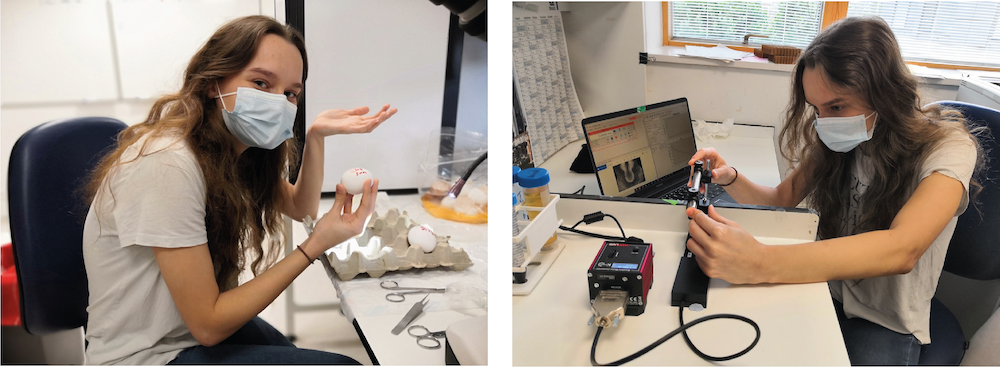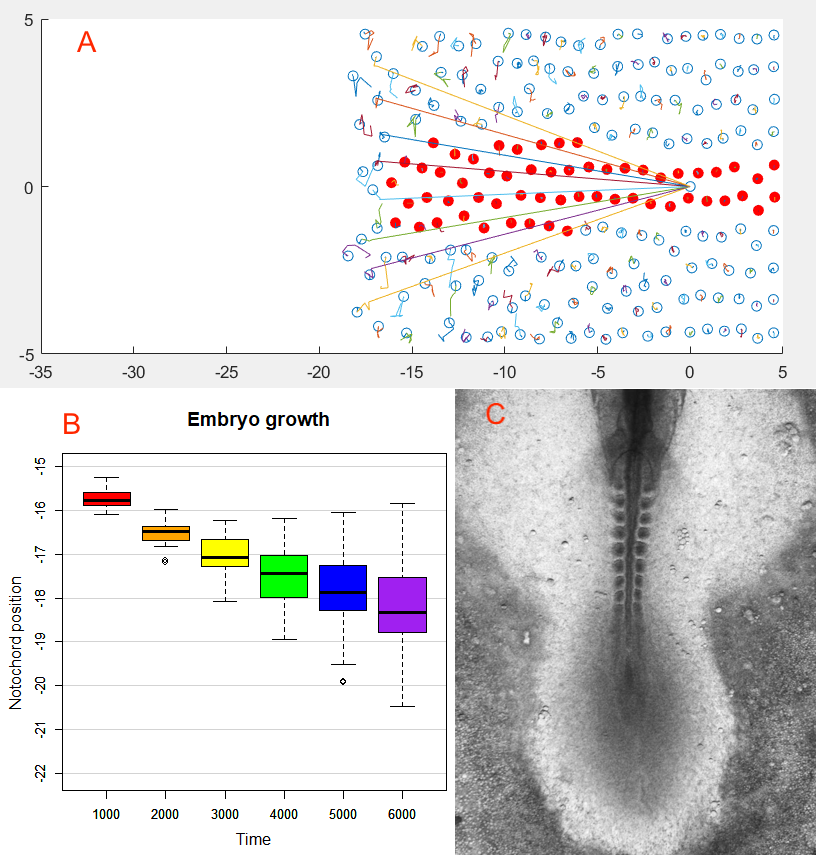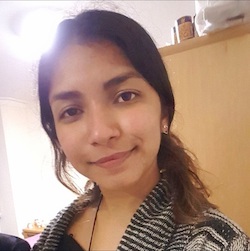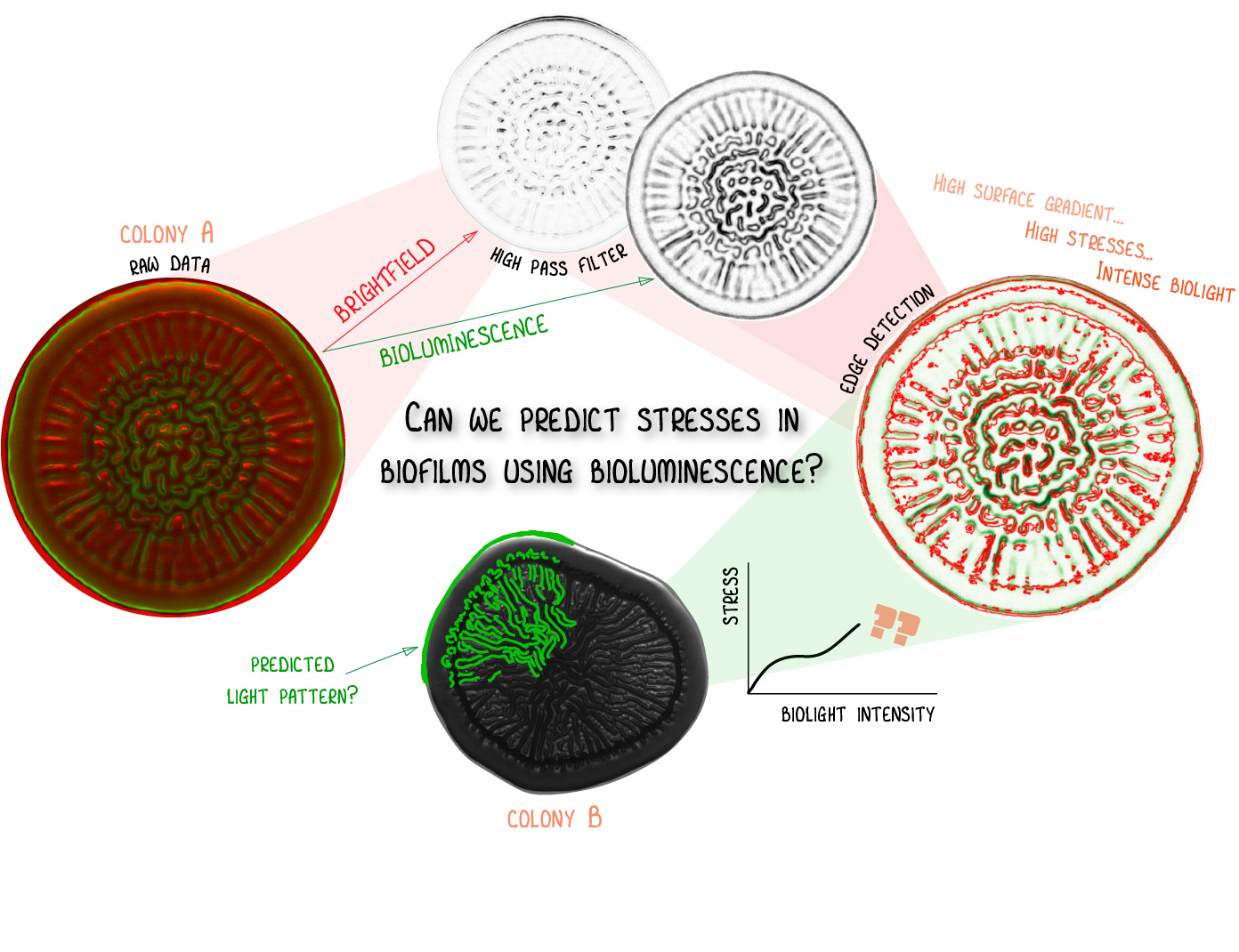Radhika Gupta (Pembroke College), "The mechanics of biofilm morphogenesis" - Dr Nuno Oliveira (DAMTP)
Alicja Maksymiuk (Christ's College), "Robustness of multi-tissue elongation in a chick embryo" - Dr Fengzhu Xiong (Gurdon)
Maxime Theisen (St Edmund's College), "Live Modelling the Vertebrate Presomitic Mesoderm" - Dr Ben Steventon (Dept. Genetics)
Alicja Maksymiuk
(Christ's College)
"Robustness of multi-tissue elongation in a chick embryo"
Xiong Lab (Gurdon)
“I really liked the fact that I was given intellectual freedom to approach the given question in any way I wanted. After coming up with ideas, I discussed them with the lab leader and he would teach me the techniques I needed for that approach. I wasn’t just told to do experiments for someone else’s project.”
My project
The project focused on the robustness of the chick embryo elongation during development. If the embryo is pulled forcefully, it slows down its elongation to minimise the deviation from the target length. In the course of 8 weeks I tried to establish what could be the mechanical basis for such behaviour by using computer modelling, biological experiments and engineering. I gathered data by performing mechanical perturbations and microsurgeries on the embryos. Additionally, I created a device to pull embryos in a well-controlled manner. I adapted a computer model of the notochord growth to predict embryo’s behaviour after pulling. The model was then tested against the experimental data. It helped to explain what could be the mechanical basis for the embryo's developmental robustness. (see graphical abstract at the bottom)
The techniques
- Incubation and retrieval of chick embryos
- Chick embryo culture on filter paper
- Microsurgeries
- Computer modelling of tissue behaviour in Matlab.
Overall
The CPB studentship allowed me to appreciate that modern biological research is inseparable from computational and physical disciplines. The research project I undertook taught me how to combine the power of computer simulations, the usefulness of engineering and the irreplaceability of biological experiments in order to answer developmental questions. I intend to study Genetics and then Systems Biology, and not only did I gain the invaluable skills but also, I developed courage to approach problems in non-standard ways.
Figure legend:
Top panel: Computer simulations of chick embryo behaviour after pulling
Bottom left panel: Sample data obtained from simulations
Bottom right panel: Chick embryo whose growth is tracked for a few hours. The obtained data is compared to the simulation's predictions
Radhika Gupta
(Pembroke College)
"The mechanics of biofilm morphogenesis"
Dr Nuno Oliveira (DAMTP)
"The studentship has given me more confidence in my own intuition and ideas, and has helped me to pay close attention to the validity and accuracy of what I’m doing. I will be more stringent with analysis I perform in the future, and will be more likely to ask interesting questions about the systems I study."
My project
The wider aims of the biofilm growth research field are to better understand biofilm mechanics and internal stresses, to prevent their growth on surfaces, and tackle some of the problems they pose in the medical field such as equipment contamination, chronic infections, and antibiotic resistance. Lab experiments have suggested a potential link between bacterial bioluminescence and stresses. With the aim of creating a mapping between bioluminescence and stress, I analysed movies of biofilms imaged both with visible light and pure bioluminescence, and simulated biofilm stresses using a mathematical model.
The techniques
Primarily, I learnt about the process of conducting research, and being systematic with and critical of my analyses. I developed more streamlined programming techniques using a combination of python files and jupyter notebooks, how to avoid and deal with technical debt, and how to structure my code in a user-friendly way. I learn some different image processing methods as well as skills in using the ImageJ software.
Overall
I enjoyed learning about image processing in more depth, as well as taking time to think about how to perform certain processes, such as order pixel coordinates to move around a circle. I also enjoyed being able to simulate meshes using a model and seeing how changing parameters affected the result. I liked that I could recognise and learn about some of the mechanical principles at work a biofilm: a system which is very different from those I have studied in engineering, and with great complexity.
Figure caption: The process of analysing both bioluminescence and brightfield light patters to characterise a biofilm such that it can be compared with a simulated biofilm also providing stress information, with the goal of eventually creating a reliable mapping between bio-light intensity and stress.





